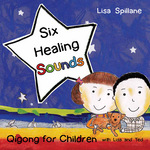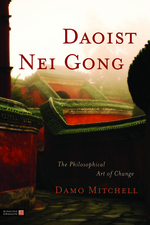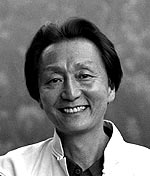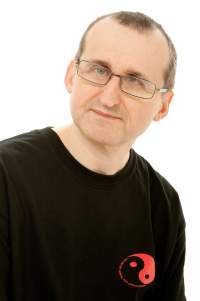 Michael Davies is a senior instructor with the Tai Chi Union for Great Britain. He has been practising Chinese internal arts for over 30 years and teaching Tai Chi Chuan for 13 years. He runs a Tai Chi club with regular classes, workshops and seminars in Tai Chi, Qigong and Jiangan. He lives in Hertfordshire, UK.
Michael Davies is a senior instructor with the Tai Chi Union for Great Britain. He has been practising Chinese internal arts for over 30 years and teaching Tai Chi Chuan for 13 years. He runs a Tai Chi club with regular classes, workshops and seminars in Tai Chi, Qigong and Jiangan. He lives in Hertfordshire, UK.
Here, Michael answers some questions about his new book, Jiangan – The Chinese Health Wand.
Video: Click to see Jiangan in action!
When did you first come across the Chinese health wand?
I saw it performed by an elderly Chinese man while on holiday in Malaysia in 1982, then later read a copy of the book by Bruce L. Johnson, the man who discovered the system in Shanghai in 1945. I had only just begun learning Tai Chi, which I took up mainly for the martial and meditation aspects. So although I was intrigued by the ‘Chinese Wand’ I was not sufficiently motivated to study it at that time. It was thirty years later, after working in an office and experiencing a sedentary lifestyle for much of that time, that I become more interested in the health aspects of Asian arts. I had become a Tai Chi instructor but felt that there were areas of conditioning and fitness that even this Chinese treasure was lacking. I decided to revisit Johnson’s book and experiment with the exercises, and was so impressed that I wrote this book.
What does Jiangan mean?
In Chinese (pin-yin) ‘Jian’ means health and ‘Gan’ means pole or wand. Jiangan can therefore be translated as ‘Health Wand’. Although there is no direct mention of Jiangan in Chinese written records, such exercises have been traditionally passed down from teacher to student orally for many generations. Dr Cheng, the Chinese Grandmaster who taught Bruce Johnson, claimed that the art was as old as Yoga and Qigong. But unlike other Asian mind-body systems that developed health aspects as by-products of spiritual advancement (Yoga), martial skill (Tai Chi) or healing specific illnesses (Qigong), Jiangan was specifically devised as a daily health and fitness maintenance routine for the gentry and imperial family who had unique health problems caused by their sedentary lifestyle. So for this purpose only the exercises evolved, the less effective and less safe exercises being replaced by more potent and safer exercises through countless generations. This makes it a scientific and comprehensive daily work-out.
Did you find Jiangan easy to learn, and have you found that the practice has expanded over the years?
It is very easy to learn but deceptively so. It possesses hidden subtleties and can be as simple or as challenging as you like. People tend to start practising physically but when the body adjusts there is less need for physical exertion. Eventually you realise that it is very much an internal exercise and you focus more on the deep diagrammatic breathing and develop a meditative frame of mind which greatly enhances your practice. The book takes the reader through the exercises in great detail and suggests traditional mental imagery based on the Chinese element system which helps to link the physical movement to spiritual concepts.
What are the health benefits, and how long each day do you need to practice?
The benefits include a sense of well-being, a clear tranquil mind, deep restorative sleep, increased energy, sexual vitality and fertility, increased circulation, clear skin, more efficient metabolism and improved digestion. But in addition Jiangan stretches and strengthens the physical body and is capable of delivering body-shaping results associated with vigorous gym workouts. It is therefore a holistic internal-external exercise. Many people separate health and fitness but Jiangan regards both as the same. Although there is stretching and strengthening similar to Western exercises these are performed in the style and spirit of a Tai Chi or Qigong routine. We approach stretches in gradual stages, always returning to the beginning posture with each breath and not holding a stretch for longer than a breath. Every movement is cyclic, gradual and gentle. So physical goals can be achieved at the same time as ‘internal cultivation’ because they are both part of the holistic joining of mind and body. Perhaps the systems’ most crucial contribution to health is its capacity to improve posture and help with a whole range of back, shoulder, and neck problems.
Twenty minutes a day is adequate to avail oneself of the many health benefits.
VIDEO: Michael Davies demonstrates some Jiangan exercises.
[youtube]_MdRX4gvjaM[/youtube]
Is this a purely ‘health’ practice or does it, like other Chinese energetic movement forms, carry within it a deeper spiritual practice?
The unique esoteric aspects of the art are based on Chinese traditional medicine and more obscure ancient practices, particularly involving the Gan itself. I discovered that the length that Johnson and Grandmaster Cheng specified for the Gan is approximately a ‘Golden Ratio’ longer than the length of an average person’s arm, which is probably the basis of the intriguing esoteric principles surrounding the Gan (‘Wand’ is an apt, rather magical term). Holding the Gan at each end – one hand considered ‘Yin’ and the other ‘Yang’ respectively – may relate back to the Healing Rods of ancient Egypt. Continuing with the Egyptian theme, this wide grip creates a symbolic pyramid shape with the body. As we continually circulate Qi around this ‘pyramid’ its vertex or tip repeatedly focusses on and stimulates the body’s two ‘polarity points’; the Yang (Baihui) on the crown of the head and the Yin (Huiyin) at base of the spine. This process relates to the important Chakra centres of Yoga and can also be seen as a simplified way to perform the ‘Microcosmic Orbit Meditation’ of Taoist alchemy. The ‘Yin-Yang’ concept is also an important influence on body mechanics. In most exercises the Gan acts as a fulcrum or lever. In many of the exercises, one part of the body is motionless (Yin) while another part is in motion (Yang). This creates a resistance that causes beneficial stretches and also massages internal organs. It is a methodology in stark contrast to Tai Chi where all the body moves as one unit.
Why do you think it is not very well known?
Bruce Johnson said that Dr Cheng was the last Chinese Grandmaster. When he introduced it to the West in the 1950’s there was little enthusiasm for Asian arts. By the time Tai Chi and Qigong became popular Johnson had given up teaching for religious reasons. The art was left behind. Though a few people kept it alive using Johnson’s out-of-print book as a reference point. But the internal, philosophical side of the art was not being taught. In recent years it seems to have been relegated to the role of a ‘quirky physical exercise with a stick’.
Using my experience in Chinese internal arts I wanted to rediscover the internal philosophy and present the art as originally intended so that a new generation can reap the health benefits. In fact, it was the way Jiangan effects the physical body that was the catalyst for writing the book. Even though I had been practising Tai Chi for over thirty years, like many men my age I had developed a middle-aged spread. There seems to be a consensus amongst Tai Chi and Qigong practitioners that it is possible to have a middle-age spread and still be healthy and to regard exercises that focus on physical improvement as somehow inferior and cosmetic. But an expanding waistband is often a sign that visceral fat – the fat that sits around the major organs and linked to diabetes and heart disease – is accumulating in the body. After practising Jiangan for several weeks my middle-ages spread was gone and I felt fitter, leaner and stronger, more supple than I had for years. I hope that my book will be particularly useful to people attracted to internal Chinese health but who also need to reduce weight and keep fit.
How does this practice fit within the Chinese martial arts tradition, and how might you integrate it with martial arts practice?
Jiangan is not a martial art and there is no evidence that it evolved from martial techniques. However, the dimensions of the Gan itself is approximately the same as the Chinese short staff (sometimes called the ‘Gun’ or ‘whip staff”) used for some martial forms.
It is a complete and integrated warm-up, a stretching, strengthening and Qigong-energy type practice that can be utilised to support any martial art training. It enriches training sessions and makes them more effective.
Now that the book is published, what is your next challenge?
I would like the art to become better known and more widely practised – particularly in the areas where it’s unique qualities can make a significant contribution, such as tackling obesity and weight-loss – especially in seniors and helping sedentary people overcome problems associated with their lifestyles. As it is simple to learn there is great opportunity for a wide range of people to teach themselves without long-term commitment to lessons or classes. Johnson wanted his own book to be in every nursing home, every hospital, every physical therapy room, every doctor’s office. I would like to see Jiangan practised by workers in offices and factories to increase productivity and the health of the workforce. I would also like to see it practised in schools and colleges, where it could not only help maintain student’s physical fitness but also be an accessible introduction to Chinese internal arts.
Copyright © Singing Dragon 2011.
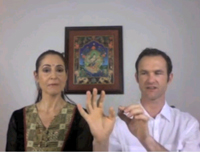
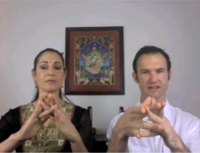
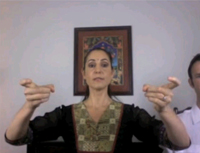
 Michael Davies
Michael Davies